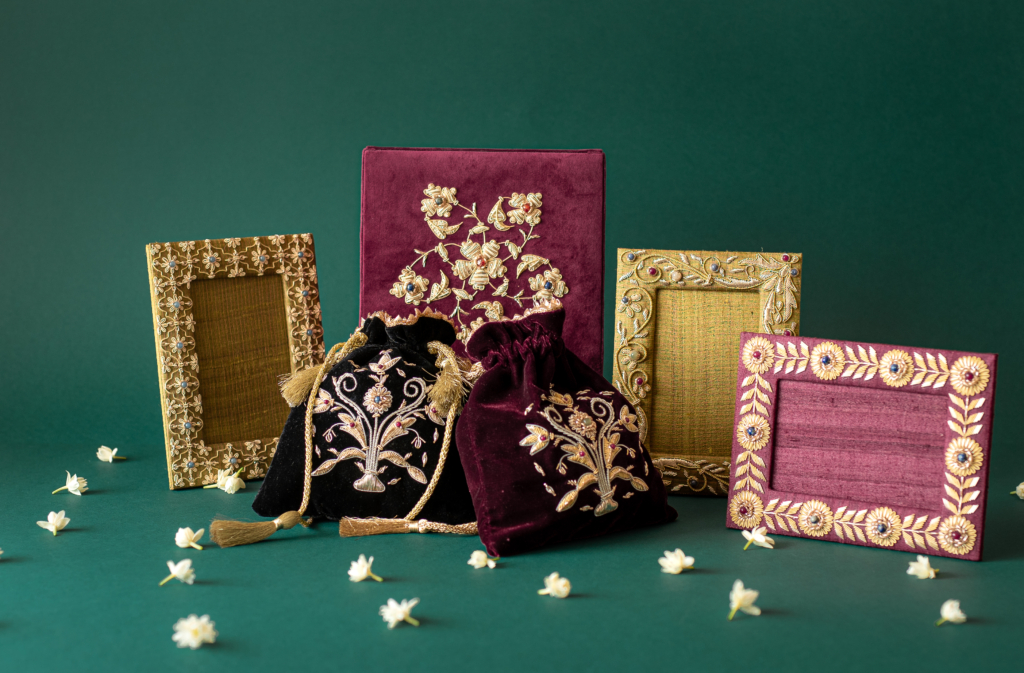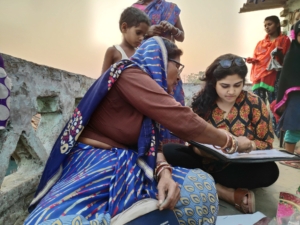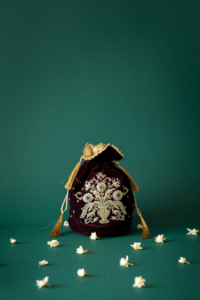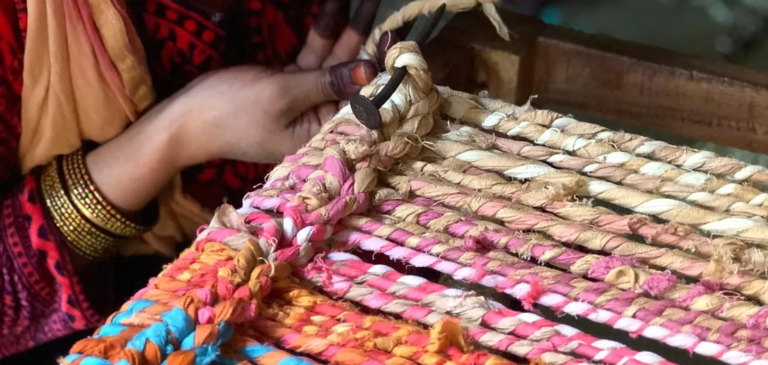The shared vision of preserving cultural knowledge systems, while changing the way traditional art and artisans of India are perceived – that in a nutshell, is what ‘The Indian Craft Project‘ (TICP) is all about.
What began as a learning journey in 2018-2019, has today manifested into a virtual marketplace that prides in co-creating and curating artisanal products with traditional craftsmen from across India. TICP is also actively involved in helping the artisans up-skill by holding workshops that train them on harnessing technology to improve marketing.
The overall vision for TICP are:
- Craft forms to adapt to different brief
- Build an independent brand where one doesn’t depend on other brands
- Everyone feels safe to collaborate (client and TICP, artisan and TICP)
- Able to reimagine craft
- Become part of every wedding, in India and abroad
TICP is bootstrapped and began with one person wondering if she could bring value to the sector. She had one question – why is India’s share for this sector in the global market so low? In this article, we bring you a very interesting conversation with Saumya Pankaj, Founder and Designer, TICP, where she shares her philosophy, her travels, her experiences and most importantly, her vision to see crafts as all pervasive, whether it is wedding or corporate and not just as aesthetics.
Seeds Sown at a Young Age:
As an army kid, Saumya was exposed to a variety of set-ups, cities, people and cultures. In her growing years, she noticed her mother reach out to the jawans and their families, hearing their stories, sharing their worries and helping them in any way she could. This exposure helped her learn about empathy for fellow humans, a fascination towards different cultures and formed the basis that opened her mind to immense possibilities.
An introvert by nature, Saumya learned the art of storytelling via illustrations. A chance comment about making it a career turned her towards Visual Thinking. She applied and got through Srishti School of Art and Design where she was introduced to topics like contextual awareness, imagination and visualization, analytical reasoning etc. Here she realized how her innate skills could be used for a multitude of things. This was followed by a stint in advertising, social innovation sector and media. She gradually learned that she enjoyed the process of slow design and working with the grassroots.
Six States Story:
Once she realized the joy she derived when working with the artisans, Saumya decided to travel and learn from the experts – the craftsmen.
She traveled to six states, different craft clusters in each state, and spent time with artisans across crafts and cultural practices. Each time, she got different ideas, new challenges, new stories and learnings. She conducted design thinking workshops to understand how people engaged with arts and crafts. She realized collaboration facilitated creativity, built on the mundane and reimagined the regular.
The key thought behind visiting each craft cluster was to identify the challenges and scope of the cluster and add value to it via storytelling and packaging. Her key takeaways from the time she spent with the communities were their willingness to learn, their enthusiasm for their craft and their ability to incorporate new ideas.
The Building of a Platform and Growth of TICP:
In an effort to provide a platform for the artisans that ensured fair share, Saumya and her team started an Instagram page (@theindiacraftproject). Here, they started with ‘the 36 days of type’ posts. This was a yearly open call that explored the creative boundaries of letterforms by challenging participants to design a letter or number each day for 36 consecutive days. Since Saumya started out as an illustrator, this naturally interested her and the added advantage was that it was then an Instagram ‘trend’ and thus managed to entice a lot of audience/ followers organically. In her Instagram posts, she chose to focus on A to Z of crafts and figured out the youngsters appreciated this new way of documenting arts and crafts. The page managed to garner over 6 thousand followers and was going strong. Unfortunately, just before they were to launch their Diwali collection, their page got hacked and shadowed.
This was when they started looking at other channels to showcase the artisans’ work. Here they faced issues where the channels wanted to showcase only some kinds of products. While the TICP team tried to ensure a fair spread, it was still a challenge. This was also the time the pandemic hit, so they dropped everything and decided to focus only on what the artisans wanted.
It was a tough time for the artisans where they had no cyclic income and no raw material. For a few clusters, TCIP invested and designed new products and used time well. They engaged youngsters and taught them photography. They directed online forms and data to established ecommerce websites so the artisans could earn some money. They hosted online workshops, addressed internet issues and, looked for libraries nearby where the artisans could host workshops to generate income.
This was the beginning of the idea for a TICP website, an identity of their own where the artisan partners could help co-create products and services and receive a fair share in the profits. As Saumya reminisces, “It was all for the good in the end, because it gave us the impetus to work on our website and launch it as soon as possible.”
Their website was launched in 2021.
The TICP Philosophy and Key Differentiator:
Saumya and her team keep an eye for what’s trending and incorporate it into their designs while ensuring that the authenticity of the end product is not compromised. They work in tandem with the artisan partners so everyone is on the same page.
Their products are perfect for contemporary use and yet manage to retain the age-old charm and their key differentiator – 70% of the products are co-created (designed and tweaked to suit contemporary usage ), while the remaining is curated.
They rely on three strands of philosophy to stay on the path –
Storytelling
The staunch belief that the act of creation is essential in modern times in order to remain rooted to the traditional knowledge systems. Therefore apart from focusing on the ‘karigiri’, equal pride is placed in telling stories of people, cultures and complex processes that make these ideas come to life.
Sustainability
Adaptation of cultural practices, values of sustainability, and the creativity to innovate form the root, and a wish that in due time this leads to patronage for artisans rather than just a transactional approach.
Relevance
A wholesome belief in being authentic to expression via the amalgamation of design and craftsmanship that has stood the test of time. Good design is powerful and handcrafted products are an essential aspect of exploring creative roots through life-changing and immersive experiences.
Plans for the Future:
With their focus on providing better opportunities and payment to the artisans, TICP is looking at the Luxury Wedding Space. Their intention is to involve the artisans from the beginning and to create experiences that will be personalised and memorable for the bride and groom.
The germ of an idea grew to a solid plan when Vogue featured their Zardosi embroidered ‘Potli’ as a wedding must-haves.
The process they follow for weddings includes free consultation for budget and timeline, the sharing of portfolio, the option to pick crafts depending on the budget (regular, unique, rare). The whole event from invites to the return gifts is carefully thought through and planned to the extent that even the packaging is cool and has a story to tell.
As in every other project, the artisans are involved via video calls, Team TICP does the story boarding and lets the artisan work their magic.
Words of Wisdom for Other Cultural Entrepreneurs:
Saumya left this conversation with a few words of wisdom that can help other cultural entrepreneurs –
– In a small business, dedicating time to admin and clerical jobs saps the energy, but they need to be done. Therefore, make the creative job your motivator, focus on quickly finishing the important but boring tasks so you can focus on what brings you joy.
– Be very organized, make technology work for you
– Collaborating with artisans can be tricky, work on building relationships and trust. Also, pride and ego cannot play a role in this bond.
TICP is working towards making Indian crafts all pervasive – be it in the gifting sector or as an integral part of weddings and homes.
Author: Uma Iyer is an avid writer and the founder of Pixel Phrase Creative Studio.







